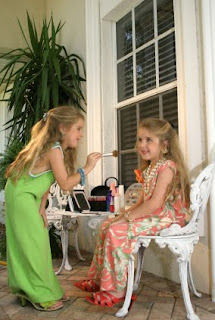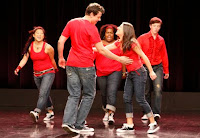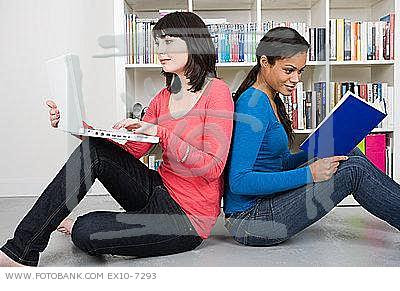Tuesday, April 20, 2010
Romance, Violation & Female Adolecent Sexual Desire- Tolman
Futhermore, Tolman states that race and class determines the way sexuality is spoken about. White young women are seen as asexual while black young women are seen as sexual. Something I would like to know is how this conclusion was made. I know black women are portrayed negatively in Hip Hop. But the same couold be said about white women and Girls Gone Wild, Mardi Gras events and etc. I wanted her to provide evidence of this statement but she focuses soley on Isabel's experience. Something else that i didnt understand is how being a sexual subject differes from being asexual object. Aren't they both equally bad?
Below is a video of spoken word poetry. I chose it because I feel it describes a little of what Tolman discusses such as a young women being violated. It also shows how girls can use sexuality to their advantage which can often be a negative thing. This also shows how sexuality can affect you based on your class. I think this is a beauiful piece and hope you enjoy it.
">
Monday, April 12, 2010
New Media, Networking & Phatic Culture- Vincent Miller

Something that I understood is that communication and the value of writting has changed dramatically with the creation of socail networks such as Facebook, twitter and myspace. Miller also compares blogging to the social networking sites listen above. Blogging allowed for individualization to occur which is a "process in which communities and personal relationships, social forms and commitments are less bound by history and, under globalization, space, are free to, and perhaps forced to actively contruct their own biographies and social bond"(Miller 388).Whereas, Twitter for instance is a form of microblogging that limits the user to only 140 words. According to Miller, Twitter is a combination of a social networking site, blog and text message. This limitation also limits the quality of what a person may say in their status. Socail networking sites like facebook, focus soley on friends, images and link to others. Text isnt important or doesn not contain any quality of the textual material.Social networking sites therefore, can be refered to as Phatic exchange which can be defined accoeding to Miller as a "communicative gesture that does not inform or excanhe meaningful information or facts about the world"(Miller 393-394).
Despite these negative changes, Miller points out that phatic media also has its positives. One example of this can be text messaging( Twitter can fall in this category as well). An advantage of text messaging is that dialouge and conversation can be avoided. It also allows people to save time from having an entire conversation which could've been brief. Another advantage of pathic media and which proves that media does matter; is that a personal information can be used as commodity to build relationships.
Something I found interesting was the concept of connected prescene. This is described as being in touch through networking technologies. Some examples of networking technologies include cell phones, email, text messages, blogs and other wireless technologies. All of the above allow people to maintain social interaction and communicate. It does sadden me that the quality of the text has lessen. But on the bright side, it gives youth another way to express themselves and images such as photos is art and another form of text.
Sunday, March 7, 2010
Fast Forward by Lauren Greenfield

[ This assignment was place here after I removed my HIV & Aids event. It's pretty late & I understand I will not get full credit for it.But just wanted to jot down my thoughts regarding this topic.]
Through out Lauren Greenfield's preface, we are told of her experiences as she did her project which came to be known as " Fast Forward". It took her four years to complete this project and her images are beautiful. They would tell stories even if text wasn't present. Greenfield tries to use her images to try to reveal elements of our culture that can be seen in the lives of the children/teens. Something I understood by viewing Greefield's project is that teenagers in Los Angeles lost their innocence very early.For example, Courtney does things normal kids do but it must work for her busy work schedule.There was also an image of a 17 year old couple named Ozzie and Chantel who had a child. In one of Grrenfield'd interviews, a teen informed her that "You grow up really fast when you grow up in L.A. It seems like everyone is in a rush to be an adult. It's not cool to be a kid."
Greenfield states that teens in Hollywood are higly influeced by the media. She states that teens growing up in Hollywood's shadow have a difficult time distinguishing reality from fantasy. A person's image is portrayed as very important in many of her images. For example,Matthew expected to go to an airport in a Limo because a limo user may signify wealth. Or Ashleigh who is thirteen years old with a phone in her room in one picture. In another picture she is wearing pearls. Another example is Enrique who save money for two years in order for him to pay for his prom. In all of these examples, money is viewed as important becasue it provides acces to other things like a limosine and clothes that may be fashionable in Hollywood.
">
Wednesday, March 3, 2010
Glee- Pilot Episode


When the episode begins, we are being introduced to people who attend the school and teach there. It begins with the viewing of a hiearchy within the students. The cheerleaders, the athletes and than the "losers". The losers consisted of minorities(an asian and black woman), a disabled boy,a feminine young man and a student who snitched about something she seen. This becomes important to through out the entire episode because these students must undergo many challenges for being a part of the Glee Club. For example, the athlete Finn could sing and only joined the Glee Club in order to prevent the use of drugs from going on his school record. He also tried to withhold this information from other athletes in order to protect his reputation.
Something I found interesting is that material things seemed to be valued in this episode. For example, in the very beginning of Glee- Pilot, a young man who seems to be feminine; shouts that his Marc Jacobs is expensive before he is thrown in the dumpster. One of the bully athletes holds his Marc Jacob jacket before the feminine young man is thrown in the dumpster. Futhermore, Mr. Shoe decided he wanted to resign as a teacher in order to find a job where he would earn more money. The episode concludes with another teacher telling Mr. Shoe that a "life worth living is one you're passionate about". Throughout the film, we see his passion as a teacher as he helps the students with their singing in the Glee club.
Something else I found interesting is that a teacher in the episode touched a student in a very sexual and inappropriate way. Was that just me the noticed that? He had on pink and was fired because of this very action.
There was a part in Glee where Mr. Shoe narrates and might've say the "blackest moment of my life" is when he blackmailed Finn into joining the Glee Club. Does anyone think that was more of a racial comment? or was it another way for saying he he blackmailed Finn? I was honestly unsure how to take that comment. I cant replay it on my laptop since I used an online site that didnt work in my favor and kept freezing.
Sunday, February 28, 2010
Hip Hop [...] By: Jared A Ball
The first reading was a little difficult for me because of the way it was written. But I think I grasp what was being said and its main point.The second reading was pretty short and understandable. I don't know if anyone felt the same way as I did.
This reading can connect with one of our conceptual framework; media matters. These readings show that hip hop like any other form of media, is shaped. According to Ball, what is produced in Hip Hop is created because that is what people want to see. He provides examples of artist who we dont see because they speak more about the colonial status of Black America such as police brutality, impoverished schools among other things. Below I also attached a video by Dead Prez which is a song about Hop Hop. They express the need for change and how hip hop should be more than what it is today; such as what we see artist like Jay-Z, 50 cent or Lil Wayne producing. These are people that little boys in middle school and high school idolize and listen to. It shows that media matters because it teaches children things about what to wear, how to wear it, how to think, how to see the world among many other things.
"Together the ants will conquer the elephant"- Dead Prez
">">
Tuesday, February 16, 2010
Coming of Age with the Internet- McMillian & Morrison

Somethings that I understood was that the "internet and related technologies has influenced [...] young people's lives"(McMillan & Morrison 73). The authors also wanted to create an understanding on how the internet is integrated into the daily lives and social interactions of young people. Parents were usually the first to buy a family computer and this provided them with a new form of communication with their children who went away for college. According to the Pew Internet & AmericanLife Project, college students were the heaviest users of the internet. Some things that college students use the internet for is checking and writing emails, shopping, downloading music, staying in touch with professors, instant messaging among many other thing. The internet was also used to "help define themselves as individuals with unique identities within the context of family and social structures. Others also used it to help build their character. Interenet and new technology can be viewed as both positive and negative. One postive aspect of the internet is that international students can use technology to enable them to communicate with people as they study abroad and more resources and information. Something that made technology negative is that itr can create social isolation. The authors provide a solution to the negative aspect of the internet and technology, they inform us that "students need to be counseled that the internet does not replace the need for traditional forms of research and should instead be viewed as a supplemental to the learning process"(91).
There wasn't anything I did not understand about this reading. Although, I did want to know more about how it affected teens specifically, especially with the new networking sites and upgrades in technology. This reading does show that media matters and can shape our daily lives. According to Kathy (someonethe authors interviewed), she stated that she uses thew internet all the time and believes her life would be different with out it."I would not be able to look up things that I wanted without calling to get a brochure, going to the library or ordering a book or a catalog[...]"(87). Something that I found quite interesting if that the first world wide web browser began in 1993. This form of technology is fairly new and recent.
">
Sunday, February 14, 2010
A Tangle of Discourse: Girls Negotiating Adolescence By: Raby
Some things that I understood is that adolescence is associated with five western discourses such as “the storm, becoming, at risk, social problem and pleasurable consumption” (Raby 425). Discourses according to Raby, “refers to a set of meanings, metaphors, representations, images, stories, statements and so on that in some way together produce a version of things or people”(430).The author further states that since adolescence is a discourse, it is constructed and reinforced by those with power. The western discourses can be viewed as stereotypes that are no different from the racial stereotypes. Adolescents are considered "others" in our society.Raby also adds that adolescence is also affected by gender, class and race but these topics are not really explored within her paper. Adolescence is a Western phenomenon that was created in the twentieth century. It is linked to consumer culture and capitalist imperatives.
Raby interviewed twelve girls and eleven grandmothers in order to find out what they thought about adolescence as they were experiencing it. The experience of these girls was compared to that of their peers and the western dominant discourses. Grandmothers were used to reflect on their own experiences as adolescents, their views on adolescents and what they thought of their grand children as adolescents. Their opinions all varied which proves that the five discourses are contradictory. One good is example is a grandmother Jan. When she was first asked how she see teenagers today, she first began by stating that different generations cannot be compared. But she compares generations by saying that teens today are more determined to get that they want.
One question I had was wheather adolescence is viewed as biological? I know that not many of the interviewees discussed adolescence in terms of biology. But how does society view or health specialist see adolescents?
Below is a video I found that relates to the reading. Its a poem about teens, rebellion and self identity among other things. Hope you enjoy!
<object width="320" height="265">
The reading connect to all of the conceptual frameworks that we will be discussing in class. For example "teenagers are not some alien life form" relates to the article because Raby uses grandmothers in order to compare their experiences as adolescence to that of their grandchildren and etc. Something I found interesting was that the author believes adolescent development is exaggerated. According to Raby, "teen years are stormier for parents than for teenagers"(431). This can be very true because when I was a teen, my mother seemed to have more of a problem that I was growing up. She didnt know how to handle every situation that she encountered with me because she didnt have her mother in her life as a child or a teen. The author also stated that how a child is raised also depends on how they turn out...wheather they are respectful, disrespectful and etc. I believe this is very true because I was raised to be respectful of adults among many other things. Even though I rebelled against my mother, individuals differ and I'm sure not every woman in the world was rebellious as teen.
Monday, February 8, 2010
When I was thirteen
Wednesday, February 3, 2010
Media Literacy


- Its creation of stereotypes/bias
- Violence is taught through entertainment
- Children & teens are targeted through advertisement
According to google, media literacy can be defined as "the ability to act, analyze, evaluate and produce communication and information" on different forms of media. In order to be literate about the media, we must all think critically about the things that we see within the media. Being critical and analytical about the things that we see on TV, Magazines, films, billboards and etc, will enable us to make changes or positive decisions. It will also help us be wiser consumers.
Sunday, January 31, 2010
Unlearning the Myths That Bind Us- Linda Christensen
The author’s main idea is that the media provides us with a secret education. It teacher us " how to act, live and dream"(Christensen 126). According to Dorfman also teaches us:
· Not to rebel
· Styles of violence
· Sex roles
· How to succeed
· How to love
· How to buy
· How to conquer
· How to go beyond our past and restrain our future(?)
Among other things, the media teaches its viewers/readers to “accept the world as it is portrayed in these social blueprints”(Christensen 126). Children books, movies and cartoons create distorted views of non white characters. There are often patterns of stereotypes that are found within these forms of media. For example, Arabs have the same face, wear turbans and are violent. This could be seen in Aladdin or in an episode of Popeye called “Ali Baba and the Forty Thieves.” Or people of color were often portrayed as servants to whites. Men were portrayed as powerful while mothers were non existent or were evil. The author also provide questions that can help individuals analyze different forms or media. These questions can be found a section called “Charting Stereotypes” on page 129. Analyzing media allows people to be conscious of what they see, raise awareness and possibly take action. This article also informs the reader that even though we think we might make our own choices; we are influenced by the media. For example, if you’re wearing anything that is of a popular brand, you’ve been influenced by the media.

